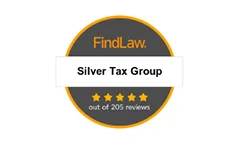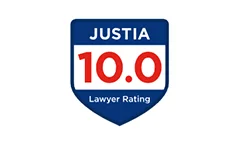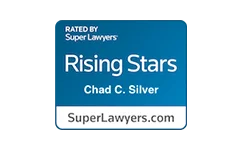How To File Your IRS Penalty Abatement Form In 4 Steps

Have you ever felt the cold sweat of IRS penalties soaking through your shirt? If yes, then relief might be closer than you think. Enter the IRS penalty abatement form.
This could be your golden ticket out of tax trouble. But not everyone knows it exists, or how to wield its power effectively. Last year alone, countless taxpayers faced hefty fines for a myriad of reasons.
From late filings to inaccuracies on their returns. The thought itself is enough to make anyone’s wallet tremble in fear. Yet, amidst these turbulent tax waters floats a lifeline – Form 843.
This blog will help you learn all about the IRS penalty abatement form and how it can reduce your tax burden. For more detailed guidance and assistance, consider our tax consulting services.
Key Takeaways:
- Form 843 Use: A tool for requesting IRS penalty, fee, or interest abatement.
- Abatement Eligibility: Depends on uncontrollable circumstances affecting tax compliance.
- Eligible Penalties: Know which penalties can be reduced and the required details for Form 843.
- Filing Form 843: Provide accurate personal and penalty details, along with supporting documents.
- Tax Compliance: A good compliance history boosts chances for penalty relief.
What Is The IRS Penalty Abatement Form?

Let’s break it down. IRS Form 843 is kind of like a superhero for your tax woes. It’s your go-to form to ask the big guys at the IRS to take another look at those penalties, fees, or interest they’ve charged you.
Do I Qualify for an Abatement?<
If you’re scratching your head wondering if this magic eraser applies to you, here’s the scoop: abatement isn’t about making things disappear into thin air (though we wish). It means getting a reduction on what you owe – whether that be taxes, penalties, or certain fees. And yes, there’s a good chance you might qualify especially if circumstances beyond your control got in the way.
Penalties Eligible for Relief
Navigating through penalty relief with IRS Form 843, while it may feel like trying to decode an ancient language sometimes, doesn’t have to be daunting.
- If faced with unexpected fees or inaccuracies courtesy of Uncle Sam himself – breathe; there’s often a path forward.
- Gather up any notices received from them because each one holds clues (like specific section numbers) crucial when filling out that form.
- Last but not least – know that help exists whether through reaching out directly to pros who’ve walked many others through similar mazes or taking advantage of resources designed precisely for these moments.
No need to let those penalties weigh heavy anymore; understanding and acting upon options available could very well turn things around quicker than expected.
How to Successfully File Form 843
Filing IRS Form 843 might seem like you’re stepping into a maze, but hey, let’s turn that maze into a straight line. Ready?
Step-by-Step Instructions
First off, grab the Form 843 here. Got it? Great. Now, let’s break down this journey:
- Your Info: Start with your name, address, and Social Security Number or Employer Identification Number if it’s for business.
- The Gritty Details: The first three lines are where you spill the beans on what type of tax or fee we’re talking about and when things went south.
- Picking Your Fight: If you’re standing up against penalties (like most do), jot down the Internal Revenue Code section number related to your penalty in line 4. It should be on that notice from the IRS staring at you from across the room.
- Making Your Case: In Section 5 choose why you think an abatement is fair game – maybe “reasonable cause” fits your bill?
Required Documentation
Aim to impress by including all relevant documents right off the bat. Show them exactly why they need to cut some slack on those penalties.
- If requesting a penalty abatement based on reasonable cause – detail every bit of it. Did hurricanes sweep away your records? Tell ’em.
Mailing Address for Submission
The last step – sending this baby home. Where does Form 843 go? Straight to Uncle Sam’s mailbox which depends entirely on where YOU’RE located.
The Role of Compliance in Qualifying for Penalty Relief
Let’s talk turkey about tax compliance. It’s not just a box to tick off your annual to-do list; it’s the golden ticket to possibly getting out of hot water with the IRS. Picture this: you’ve been diligent, filing all your returns on time, paying what you owe when it’s due—being an IRS poster child.
Why does this matter? Because a history of good tax compliance can be your best friend if you ever need penalty relief. The IRS doesn’t play favorites, but they do recognize taxpayers who make a genuine effort to comply with their obligations.
Impact on Penalty Relief Eligibility
If you’re thinking about asking for penalty relief, having a squeaky-clean record can seriously work in your favor. According to the IRS’s First Time Penalty Abatement policy, here’s how things break down:
- You didn’t previously have to file or had no penalties for three years prior.
- All required returns are filed or extensions are submitted timely.
- Taxes owed are paid up or payment plans arranged accordingly.
This isn’t just throwing spaghetti at the wall and seeing what sticks; this is using strategic knowledge of past behavior as leverage—a savvy move any taxpayer should consider if faced with penalties that seem overwhelming.
To put it simply: playing by the rules pays off when seeking mercy from penance-worthy mistakes made during less vigilant moments. So yes, those late nights spent double-checking forms and ensuring every penny was accounted for? Worth it.
In essence, maintaining consistent tax compliance could very well be considered an investment—an investment that might save you from financial headaches further down the road. Buckle up and keep everything above board because let me tell ya’, staying compliant today could mean avoiding trouble tomorrow.
Timing and Expectations When Filing for Penalty or Interest Relief
Just how much time should we brace ourselves for until the whole ordeal unwinds? The short answer is—it varies. But let me give you a bit more to go on than just that.
If we’re talking about penalty abatements like those failure-to-file or failure-to-pay penalties—which by the way make up over 70% of all IRS penalties—expectations need to be set realistically. According to experts, these requests can sometimes be resolved fairly quickly if they are straightforward. However, complexity adds time.
The real kicker? Accuracy-related penalties might have you playing the long game—a very long game that could stretch years because reopening audits isn’t exactly a quick afternoon task for the IRS.
Common Misconceptions About IRS Penalty Abatement
Let’s clear the air, shall we? When it comes to IRS penalty abatement, there’s a boatload of myths floating around.
A few imagine it’s as hard to pin down as a ghost story, while others reckon having an insider buddy is the secret key. Let me set the record straight with some real talk.
Myth #1: It’s Nearly Impossible to Get Approved
“No way, Jose.” That’s what most people say when they hear about getting penalties waived by the IRS. But here’s a nugget of truth: The IRS wants to work with taxpayers.
Yes, you heard that right. If you’ve got a solid reason and your paperwork ducks in a row (think Form 843), your chances are better than you might think. Don’t let this myth hold you back from asking for relief.
Myth #2: You Need an Insider or Special Connections
This isn’t Hollywood; it’s tax law. The idea that only those with secret handshakes get their penalties forgiven is pure fiction. What matters is how well you present your case on Form 843. Stick to facts, provide relevant documentation and make sure everything adds up correctly.
Myth #3: Only Certain Penalties Can Be Abated
A lot of folks think penalty abatement is reserved for just one or two types of mishaps – like filing late or not paying on time. Not true. From accuracy-related issues down to estimated tax snafus (yep, even those dreaded underpayment penalties.) – there are more options than most realize.
The catch? Knowing which ones apply can be tricky without doing some homework first.
Tips To Tackle Your Application:
- Dig Deep: Understand exactly why you received each penalty in the first place;
- Gather Evidence: Collect any documents that support your claim for abatement;
- Tell Your Story Well: Clearly explain why these circumstances were out of control or due diligence was exercised but still led to error;
Remember, every situation is unique, so tailor your approach accordingly.
Feeling overwhelmed? Seek expertise from our tax professionals.
Essential Tips for Avoiding Future Penalties from the IRS
So, you’ve been hit with an IRS penalty? That’s a bummer. But let’s not get bogged down by what’s already happened, alright? So, what’s the game plan to prevent this from happening in the future?
Get Your Timing Right
The first rule of dealing with the IRS is never to be late. Whether it’s your tax return or any estimated tax payments, mark those deadlines in red on your calendar.
- Tax Return: Usually due April 15th. If that’s a weekend or holiday, then it’s the next business day.
- Estimated Tax Payments: These are quarterly payments due on April 15th, June 15th, September 15th, and January 15th (of the following year).
If life happens and you can’t meet these dates, file for an extension using Form 4868. Just remember: An extension to file isn’t an extension to pay.
Silver Tax Group: Your Experts Against the IRS
So, we’ve trekked through the tax jungle and emerged with a treasure map in hand: the IRS penalty abatement form. It’s not just some mythical artifact hidden in plain sight; it’s real relief for those of us battling the quicksand of penalties.
This journey showed us that yes, while some may view the IRS as this colossal beast lurking in the shadows, there are tools at our disposal to tame it – or at least make peace with it. The Form 843 isn’t a magic wand, but when wielded correctly, it can work wonders in reducing what you owe.
For more information or to work with highly experienced tax pros, contact Silver Tax Group today!
Frequently Asked Questions
What is the IRS Penalty Abatement Form?
The IRS Penalty Abatement Form, or Form 843, is used to request relief from penalties, fees, or interest for reasons such as late filings or inaccuracies on tax returns. It requires personal information, details about the penalties, and supporting documentation.
Who is eligible for penalty abatement using Form 843?
Eligibility for penalty abatement using Form 843 depends on demonstrating that uncontrollable circumstances prevented compliance with tax laws, such as natural disasters or serious illness, especially if the taxpayer has a history of good tax compliance.
How do I successfully file Form 843 for penalty abatement?
To file Form 843, provide your personal details, the tax or fee type, the period it pertains to, the reason for your abatement request, and include all relevant documentation. Mail the completed form to the IRS address based on your location.
What role does tax compliance play in qualifying for penalty relief?
A history of good tax compliance, including timely filing of tax returns and payment of taxes owed, improves the chances of receiving penalty relief. The IRS’s First Time Penalty Abatement policy favors taxpayers with a clean compliance history.
What are common misconceptions about IRS penalty abatement?
Common misconceptions include the belief that penalty abatement is nearly impossible, requires insider connections, or is only for certain penalties. In reality, the IRS considers abatement requests based on the merits of each case, and a wide range of penalties are eligible for abatement.





Free Consultation 24/7
Chad Silver
Attorney

Silver Tax Group Locations


777 South Flagler Drive
Suite 800 – West Tower
West Palm Beach FL 33401

4005 Guadalupe St
Suite C
Austin, TX 78751


